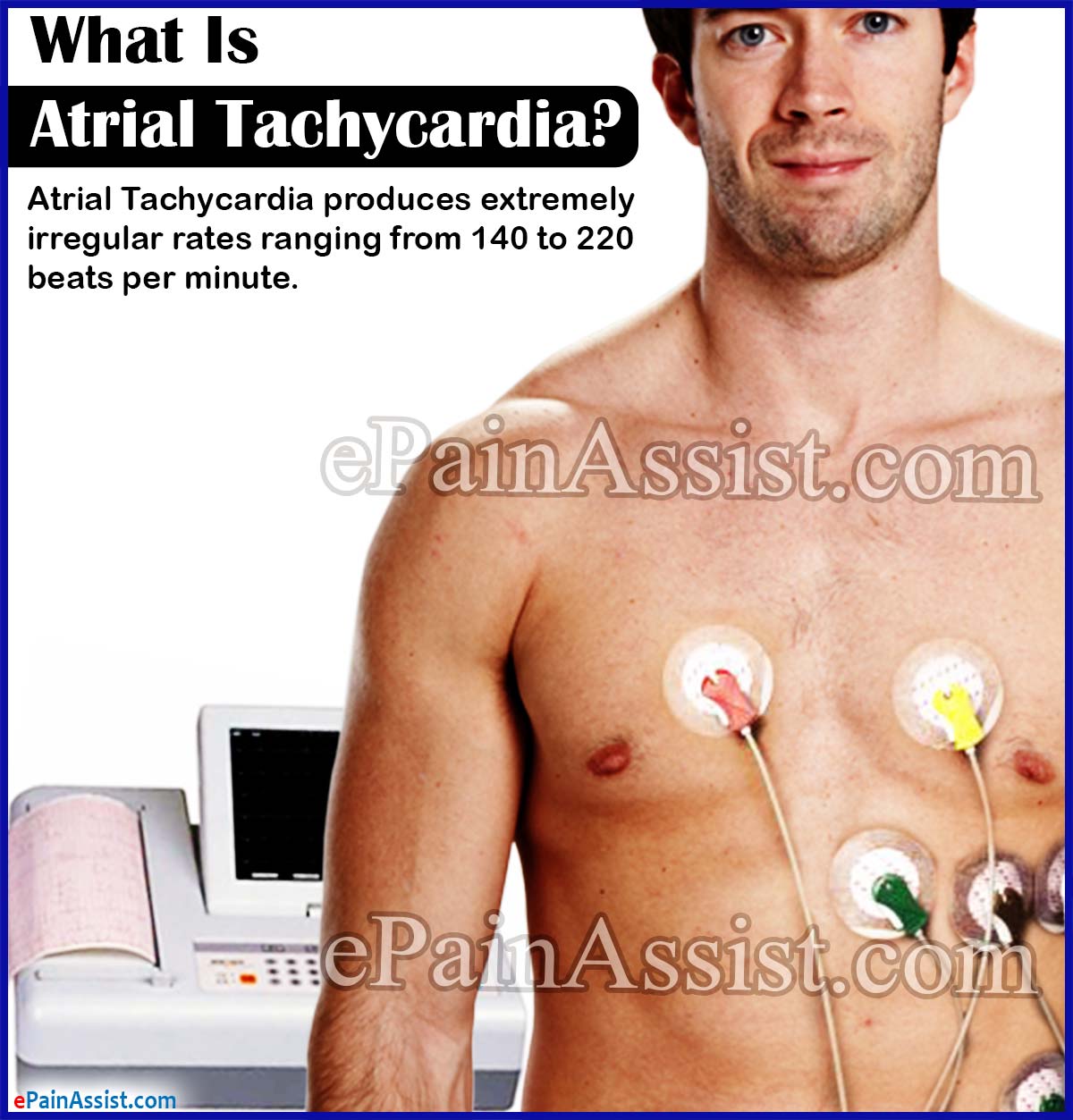What Is Atrial Tachycardia?
Atrial Tachycardia is form of arrhythmia in which the electrical impulses to the heart comes from an abnormal site rather than from the SA node which is the site from where electrical impulses to the heart are generated normally. Atrial Tachycardia produces extremely irregular rates ranging from 140 to 220 beats per minute.

What Causes Atrial Tachycardia?
The cause of Atrial Tachycardia is similar to any other form of tachycardia in which the underlying mechanism may be a rapid discharge of an abnormal focus or a rapid rhythm as a result of some pathological conditions due to some drug toxicity most commonly digoxin toxicity.
What Are The Symptoms Of Atrial Tachycardia?
The classic presenting feature of Atrial Tachycardia is the same as with all other forms of tachycardias, which is irregular heartbeat either too fast or too slow. If the heartbeat is too slow then less blood is pumped out of the heart to the rest of the body and if it beats too fast there are filling abnormalities which again cause inadequate flow of blood to the parts of the body. There are different types of abnormal heart rhythms. The ones which occur in the atrium are called as atrial whereas the ones originating in the ventricles are called ventricular.
How Is Atrial Tachycardia Diagnosed?
If the treating physician suspects that an individual has Atrial Tachycardia, the physician will order the following tests in order to confirm the diagnosis:
Electrocardiogram: This test shows the heartbeat in the form of electrical impulses. This test can show whether there is any abnormality in the rhythm of the heart and whether the heart is functioning normally.
Holter Monitor: A Holter monitor is a small portable device which is attached to the patient and the heart rhythms are monitored. This device may be put in for 24 or 72 hours. This is quite an effective way to diagnosing any abnormality in the rate and rhythm of the heart.
Treadmill Stress Test: This test is conducted to find out the exercise tolerance of the patient and how much distance the patient can cover on the treadmill before the patient starts having symptoms. This is quite helpful in confirming the diagnosis and formulating a treatment plan.
Event Recorder: This is a portable device which is attached to the heart and in case of any abnormality in the rate and rhythm of the heart that event will be recorded in the device. This way the physician can diagnose the condition and formulate a feasible treatment plan.
How Is Atrial Tachycardia Treated?
The treatment for Atrial Tachycardia depends on the results of the tests and the severity of the condition. It is up to the physician to find out the best possible treatment option for you:
Medications: There are certain anti-arrhythmic medications available which change the electrical signals in the heart in order to prevent abnormal sites from sending abnormal heart rhythms.
Followup Electrophysiology Study: To make sure that the medications are working appropriately and your condition is under control, frequent electrophysiological studies will be conducted to check the rate and rhythm of the heart
In some cases a pacemaker may be inserted to control the events of arrhythmias
Catheter Ablation: This is a procedure in which the electrical pathways sending abnormal signals are completely destroyed. This is by far the best and cost effective methods of controlling Atrial Tachycardia.
